Abstract
The most common causes of end stage renal failure in 46 children (mean age 11 years, range 4-14) treated between January 1972 and June 1977 were: reflux nephropathy (n = 12), cystinosis (n = 7), focal and segmental glomerulosclerosis (n = 6), and Schönlein-Henoch disease (n = 5). The quality of life, degree of renal function, and height attainment of the 31 survivors were assessed in June 1985, when their mean age was 22 years (range 14-27), using hospital records and a questionnaire designed to highlight social and psychological problems. Twenty six patients had a functioning transplanted kidney. Average growth during treatment for all survivors was normal, but most were disappointed with their 'final height'. Though five patients had some form of disabling bone disease, all 31 could walk and 27 could run. Sixteen (67%) were in full or part time employment and nine were living independently. A group of 32 patients with juvenile onset diabetes treated at this hospital for at least five years were also asked to complete the questionnaire and of these, 17 responded. On average, their data could usefully be compared with those of cases of end stage renal failure. More of the diabetics had jobs, but most sexually mature patients with renal disease were concerned about their physical appearance and had not achieved any stable long term sexual relationships. We suggest that a poor body image resulting in low self esteem may be responsible for the deficiency and believe that further study in this group is warranted.
Full text
PDF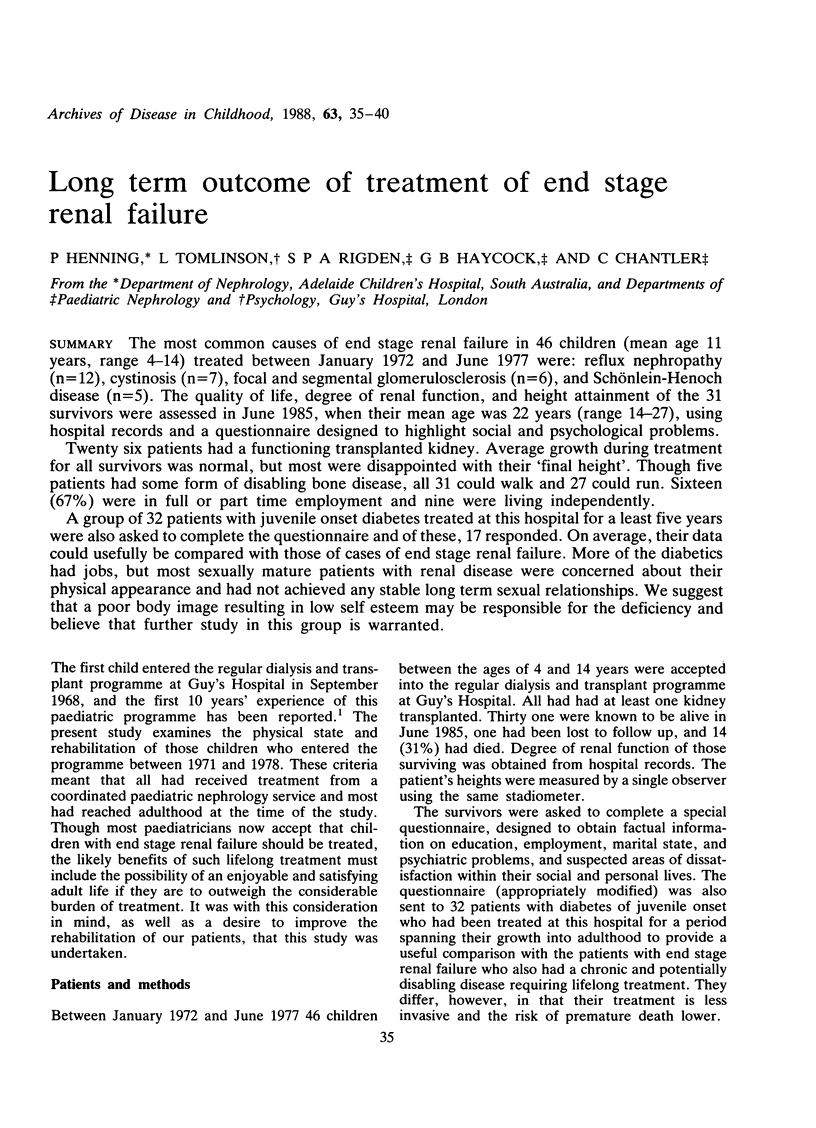
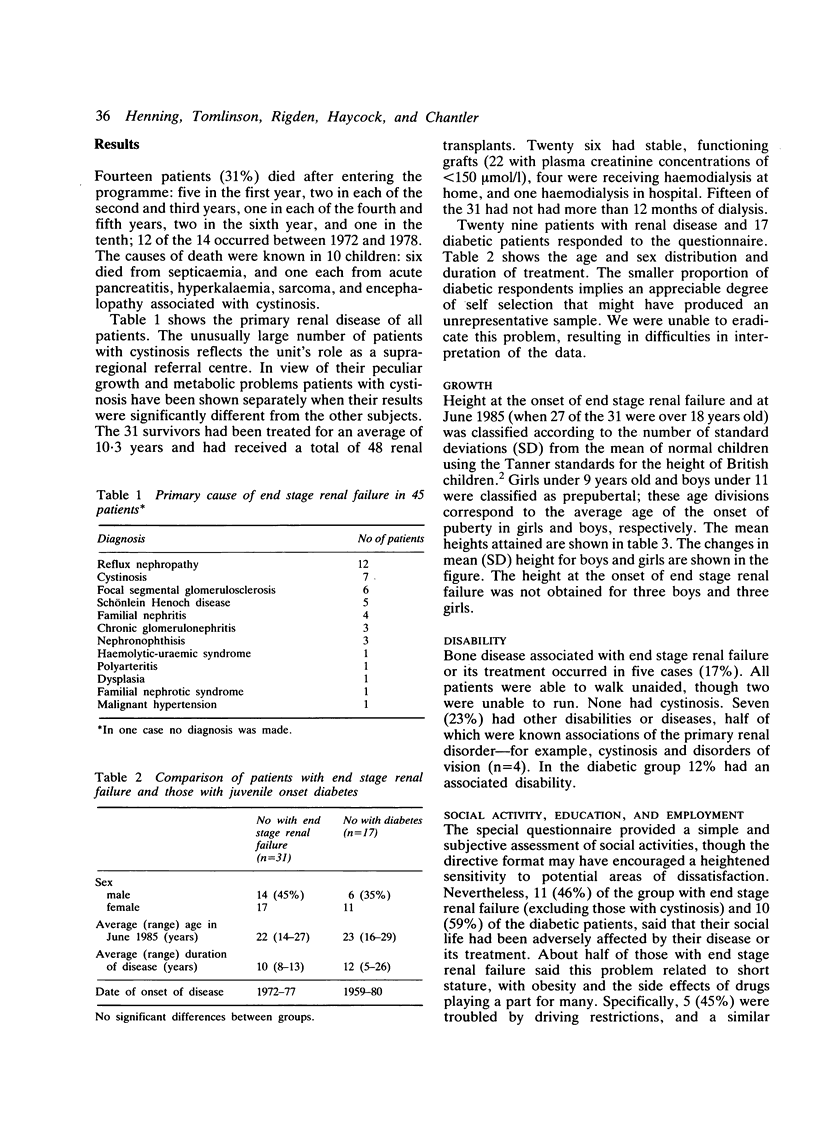
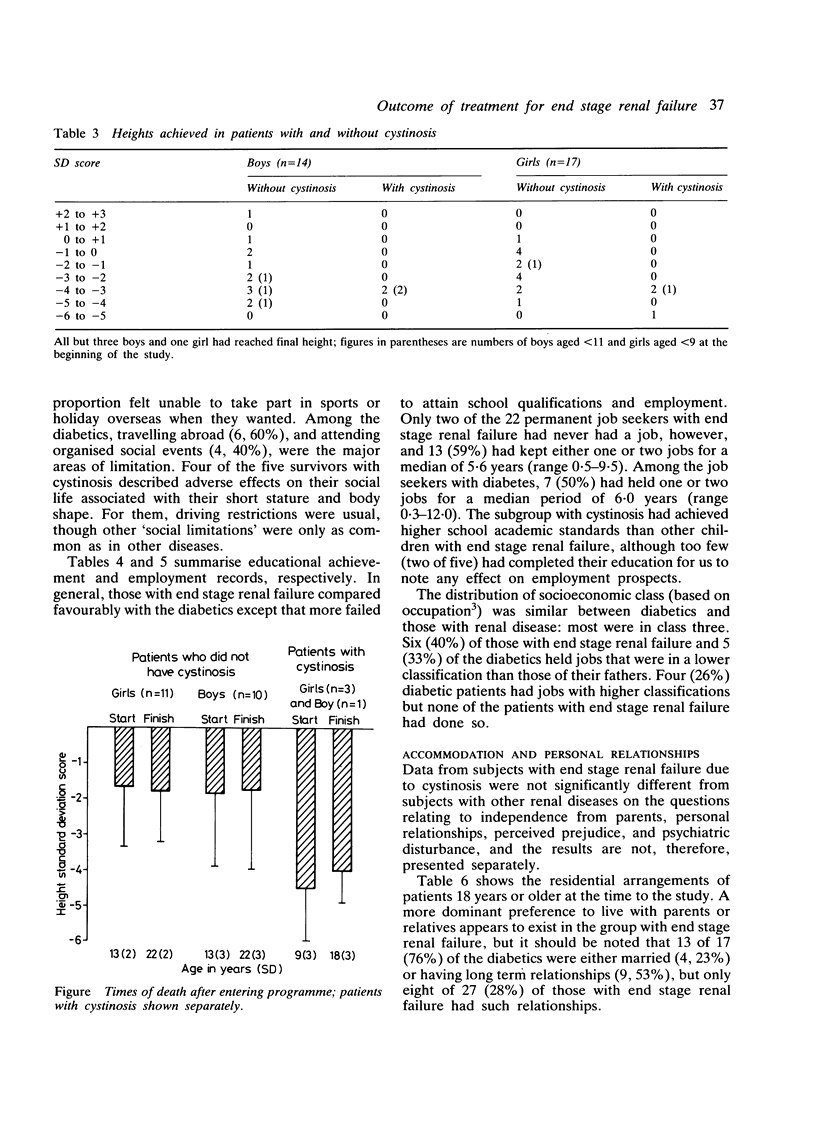
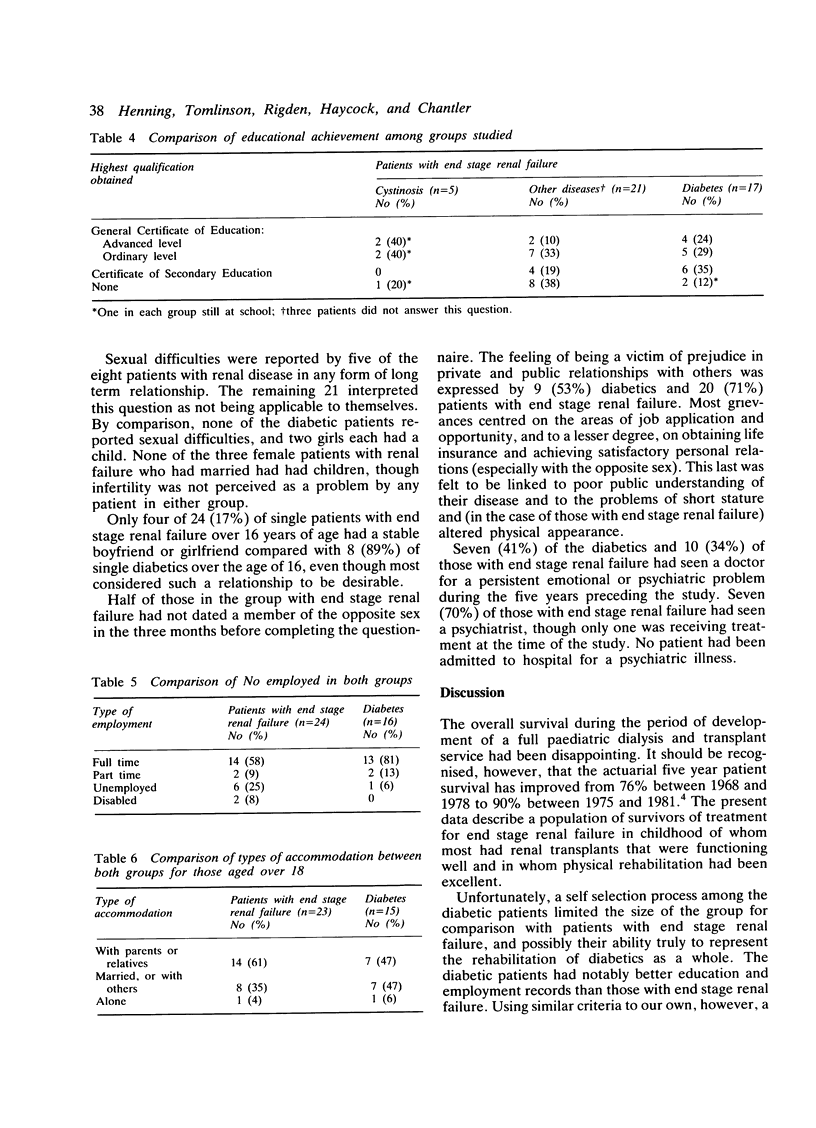
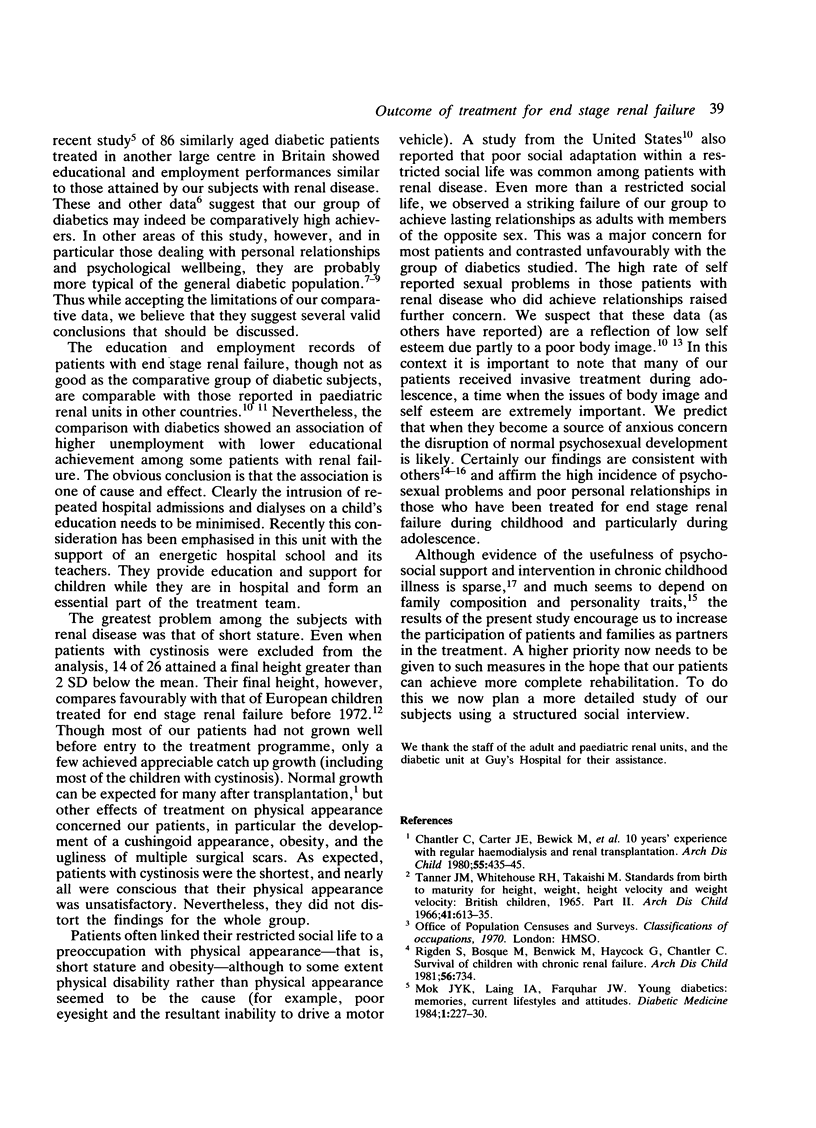
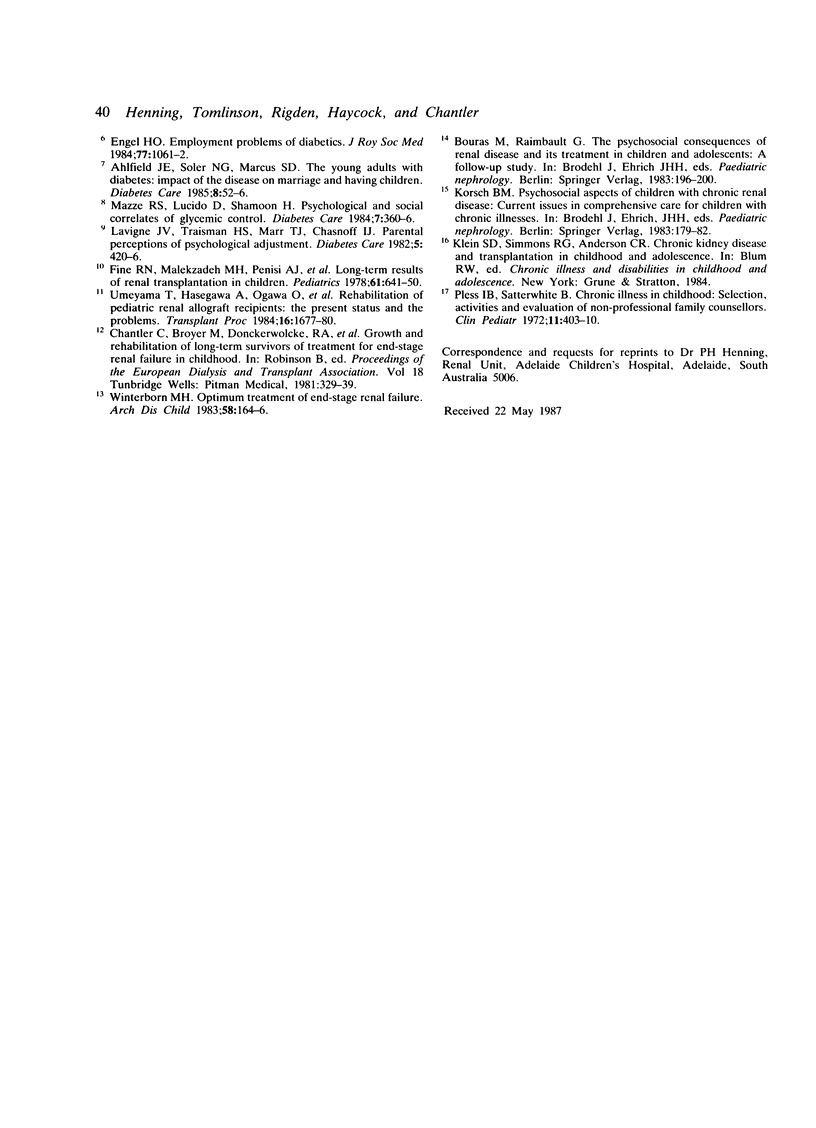
Selected References
These references are in PubMed. This may not be the complete list of references from this article.
- Ahlfield J. E., Soler N. G., Marcus S. D. The young adult with diabetes: impact of the disease on marriage and having children. Diabetes Care. 1985 Jan-Feb;8(1):52–56. doi: 10.2337/diacare.8.1.52. [DOI] [PubMed] [Google Scholar]
- Chantler C., Broyer M., Donckerwolcke R. A., Brynger H., Brunner F. P., Jacobs C., Kramer P., Selwood N. H., Wing A. J. Growth and rehabilitation of long-term survivors of treatment for end-stage renal failure in childhood. Proc Eur Dial Transplant Assoc. 1981;18:329–342. [PubMed] [Google Scholar]
- Chantler C., Carter J. E., Bewick M., Counahan R., Cameron J. S., Ogg C. S., Williams D. G., Winder E. 10 years' experience with regular haemodialysis and renal transplantation. Arch Dis Child. 1980 Jun;55(6):435–445. doi: 10.1136/adc.55.6.435. [DOI] [PMC free article] [PubMed] [Google Scholar]
- Fine R. N., Malekzadeh M. H., Pennisi A. J., Ettenger R. B., Uittenbogaart C. H., Negrete V. F., Korsch B. M. Long-term results of renal transplantation in children. Pediatrics. 1978 Apr;61(4):641–650. [PubMed] [Google Scholar]
- Lavigne J. V., Traisman H. S., Marr T. J., Chasnoff I. J. Parental perceptions of the psychological adjustment of children with diabetes and their siblings. Diabetes Care. 1982 Jul-Aug;5(4):420–426. doi: 10.2337/diacare.5.4.420. [DOI] [PubMed] [Google Scholar]
- Mazze R. S., Lucido D., Shamoon H. Psychological and social correlates of glycemic control. Diabetes Care. 1984 Jul-Aug;7(4):360–366. doi: 10.2337/diacare.7.4.360. [DOI] [PubMed] [Google Scholar]
- Mok J. Y., Laing I. A., Farquhar J. W. Young diabetics: memories, current lifestyles and attitudes. Diabet Med. 1984 Sep;1(3):227–230. doi: 10.1111/j.1464-5491.1984.tb01959.x. [DOI] [PubMed] [Google Scholar]
- Pless I. B., Satterwhite B. Chronic illness in childhood: selection, activities and evaluation of non-professional family counselors. Clin Pediatr (Phila) 1972 Jul;11(7):403–410. doi: 10.1177/000992287201100709. [DOI] [PubMed] [Google Scholar]
- Rigden S., Bosque M., Bewick M., Haycock G., Chantler C. Survival of children with chronic renal failure. Arch Dis Child. 1981 Sep;56(9):734–734. doi: 10.1136/adc.56.9.734. [DOI] [PMC free article] [PubMed] [Google Scholar]
- Tanner J. M., Whitehouse R. H., Takaishi M. Standards from birth to maturity for height, weight, height velocity, and weight velocity: British children, 1965. II. Arch Dis Child. 1966 Dec;41(220):613–635. doi: 10.1136/adc.41.220.613. [DOI] [PMC free article] [PubMed] [Google Scholar]
- Umeyama T., Hasegawa A., Ogawa O., Kawamura T., Itoh H., Hasegawa O., Nakahara C., Honda M., Sekiguchi S. Rehabilitation of pediatric renal allograft recipients: the present status and the problems. Transplant Proc. 1984 Dec;16(6):1677–1680. [PubMed] [Google Scholar]
- Winterborn M. H. Optimum treatment of end-stage renal failure. Arch Dis Child. 1983 Mar;58(3):164–166. doi: 10.1136/adc.58.3.164. [DOI] [PMC free article] [PubMed] [Google Scholar]


